Nymphalidae
Brush-footed Butterflies
Niklas Wahlberg and Andrew V. Z. Brower


This tree diagram shows the relationships between several groups of organisms.
The root of the current tree connects the organisms featured in this tree to their containing group and the rest of the Tree of Life. The basal branching point in the tree represents the ancestor of the other groups in the tree. This ancestor diversified over time into several descendent subgroups, which are represented as internal nodes and terminal taxa to the right.

You can click on the root to travel down the Tree of Life all the way to the root of all Life, and you can click on the names of descendent subgroups to travel up the Tree of Life all the way to individual species.
For more information on ToL tree formatting, please see Interpreting the Tree or Classification. To learn more about phylogenetic trees, please visit our Phylogenetic Biology pages.
close boxThe pages under Nymphalidae on the Tree of Life Web site are being worked on at this moment. Relationships are shown for the most part down to the level of genera, but there is still very little other information on the pages. The pages will be continuously updated, so please check back often.
Introduction
The family Nymphalidae is the most speciose family of butterflies with about 6000 described species so far. The family contains many well-known species, such as the monarch, the Painted Lady, the buckeye, the fritillaries, checkerspots and the electric blue morphos. Indeed, nymphalids are in many places the most visible members of the local butterfly fauna. Due to their visibility and ease of study in the field and lab, many species of nymphalids have been used as model systems to understand the complexity of life on this planet.
Characteristics
All species of Nymphalidae are united by a single morphological character, the tricarinate ridges found on the adult butterfly's antennae. Most also exhibit extreme reduction in the size of the forelegs, particularly in males (this feature is also exhibited by Riodinidae).
Discussion of Phylogenetic Relationships
The diversity in form and life style has meant that the phylogenetic relationships of nymphalids have been contentious. This in turn has meant that there has been no consensus on the classification of the group, with some authors splitting the family into up to 9 different families! The lack of a good phylogenetic hypothesis has also meant that the evolutionary history of the group has been shrouded in mystery. Recent molecular and morphological work is bringing light to the question of how different species and groups of species are related to each other. The tree shown above is the best hypothesis of subfamilial relationships based on as yet unpublished combined analyses of morphological and molecular data.
Many groups within Nymphalidae are currently under investigation, and we have endeavored to provide current hypotheses of relationships for each group. Where these are lacking, lists of taxa down to the species level are provided, in the hope that this will stimulate further research.
References
Ackery, P. R., R. de Jong, and R. I. Vane-Wright. 1999. The butterflies: Hedyloidea, Hesperioidea, and Papilionoidea. Pages 264-300 in: Lepidoptera: Moths and Butterflies. 1. Evolution, Systematics, and Biogeography. Handbook of Zoology Vol. IV, Part 35. N. P. Kristensen, ed. De Gruyter, Berlin and New York.
Brower, A. V. Z. 2000. Phylogenetic relationships among the Nymphalidae (Lepidoptera), inferred from partial sequences of the wingless gene. Proceedings of the Royal Society of London Series B Biological Sciences 267:1201-1211.
Freitas, A. V. L. and K. S. Brown. 2004. Phylogeny of the Nymphalidae (Lepidoptera). Systematic Biology 53 (3):363-383.
Wahlberg, N., E. Weingartner, and S. Nylin. 2003. Towards a better understanding of the higher systematics of Nymphalidae (Lepidoptera: Papilionoidea). Molecular Phylogenetics and Evolution 28:473-484.
Wahlberg, N. and Wheat, C. W. 2008 Genomic outposts serve the phylogenomic pioneers: designing novel nuclear markers for genomic DNA extractions of Lepidoptera. Systematic Biology 57: 231-242. (doi: 10.1080/10635150802033006)
Wahlberg, N., Leneveu, J., Kodandaramaiah, U., Peña, C., Nylin, S., Freitas, A. V. L. and Brower, A. V. Z. 2009 Nymphalid butterflies diversify following near demise at the Cretaceous/Tertiary boundary. Proceedings of the Royal Society of London Series B Biological Sciences, in press.
Information on the Internet
Niklas Wahlberg's Nymphalidae Research GroupTitle Illustrations

| Scientific Name | Libytheana carinenta |
|---|---|
| Location | Arroyo Chico, Tucson, Pima County, Arizona, USA |
| Specimen Condition | Live Specimen |
| Image Use |
 This media file is licensed under the Creative Commons Attribution-NonCommercial License - Version 3.0. This media file is licensed under the Creative Commons Attribution-NonCommercial License - Version 3.0.
|
| Copyright |
© 2008
Katja Schulz

|
| Location | Posada de Valdeón, Castille and Leon, Spain |
|---|---|
| Specimen Condition | Live Specimen |
| Source | Melanargia galathea |
| Source Collection | Flickr |
| Image Use |
 This media file is licensed under the Creative Commons Attribution-NonCommercial-NoDerivs License - Version 2.0. This media file is licensed under the Creative Commons Attribution-NonCommercial-NoDerivs License - Version 2.0.
|
| Copyright | © 2008 Alvaro Oporto |
| Scientific Name | Danaus gilippus |
|---|---|
| Location | Tucson, Pima County, Arizona, USA |
| Specimen Condition | Live Specimen |
| Image Use |
 This media file is licensed under the Creative Commons Attribution-NonCommercial License - Version 2.5. This media file is licensed under the Creative Commons Attribution-NonCommercial License - Version 2.5.
|
| Copyright |
© 2007
Katja Schulz

|
| Scientific Name | Junonia almana |
|---|---|
| Location | Fo Tan, New Territories, Hong Kong |
| Specimen Condition | Live Specimen |
| Source | Head On |
| Source Collection | Flickr |
| Image Use |
 This media file is licensed under the Creative Commons Attribution-ShareAlike License - Version 2.0. This media file is licensed under the Creative Commons Attribution-ShareAlike License - Version 2.0.
|
| Copyright | © 2007 Charles Lam |
About This Page
Niklas Wahlberg

University of Turku, Finland
Andrew V. Z. Brower

Middle Tennessee State University, Murfreesboro, Tennessee, USA
Correspondence regarding this page should be directed to Niklas Wahlberg at
niklas.wahlberg@utu.fi
and Andrew V. Z. Brower at
abrower@mtsu.edu
Page copyright © 2009 Niklas Wahlberg and Andrew V. Z. Brower
 Page: Tree of Life
Nymphalidae . Brush-footed Butterflies.
Authored by
Niklas Wahlberg and Andrew V. Z. Brower.
The TEXT of this page is licensed under the
Creative Commons Attribution License - Version 3.0. Note that images and other media
featured on this page are each governed by their own license, and they may or may not be available
for reuse. Click on an image or a media link to access the media data window, which provides the
relevant licensing information. For the general terms and conditions of ToL material reuse and
redistribution, please see the Tree of Life Copyright
Policies.
Page: Tree of Life
Nymphalidae . Brush-footed Butterflies.
Authored by
Niklas Wahlberg and Andrew V. Z. Brower.
The TEXT of this page is licensed under the
Creative Commons Attribution License - Version 3.0. Note that images and other media
featured on this page are each governed by their own license, and they may or may not be available
for reuse. Click on an image or a media link to access the media data window, which provides the
relevant licensing information. For the general terms and conditions of ToL material reuse and
redistribution, please see the Tree of Life Copyright
Policies.
- Content changed 15 September 2009
Citing this page:
Wahlberg, Niklas and Andrew V. Z. Brower. 2009. Nymphalidae . Brush-footed Butterflies. Version 15 September 2009 (under construction). http://tolweb.org/Nymphalidae/12172/2009.09.15 in The Tree of Life Web Project, http://tolweb.org/




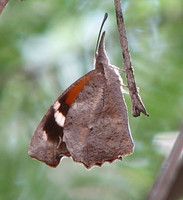
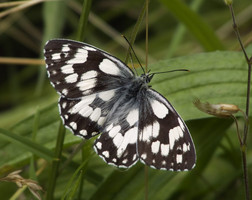
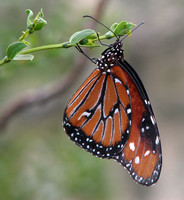
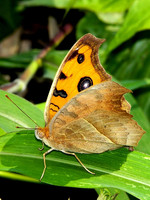

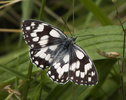



 Go to quick links
Go to quick search
Go to navigation for this section of the ToL site
Go to detailed links for the ToL site
Go to quick links
Go to quick search
Go to navigation for this section of the ToL site
Go to detailed links for the ToL site